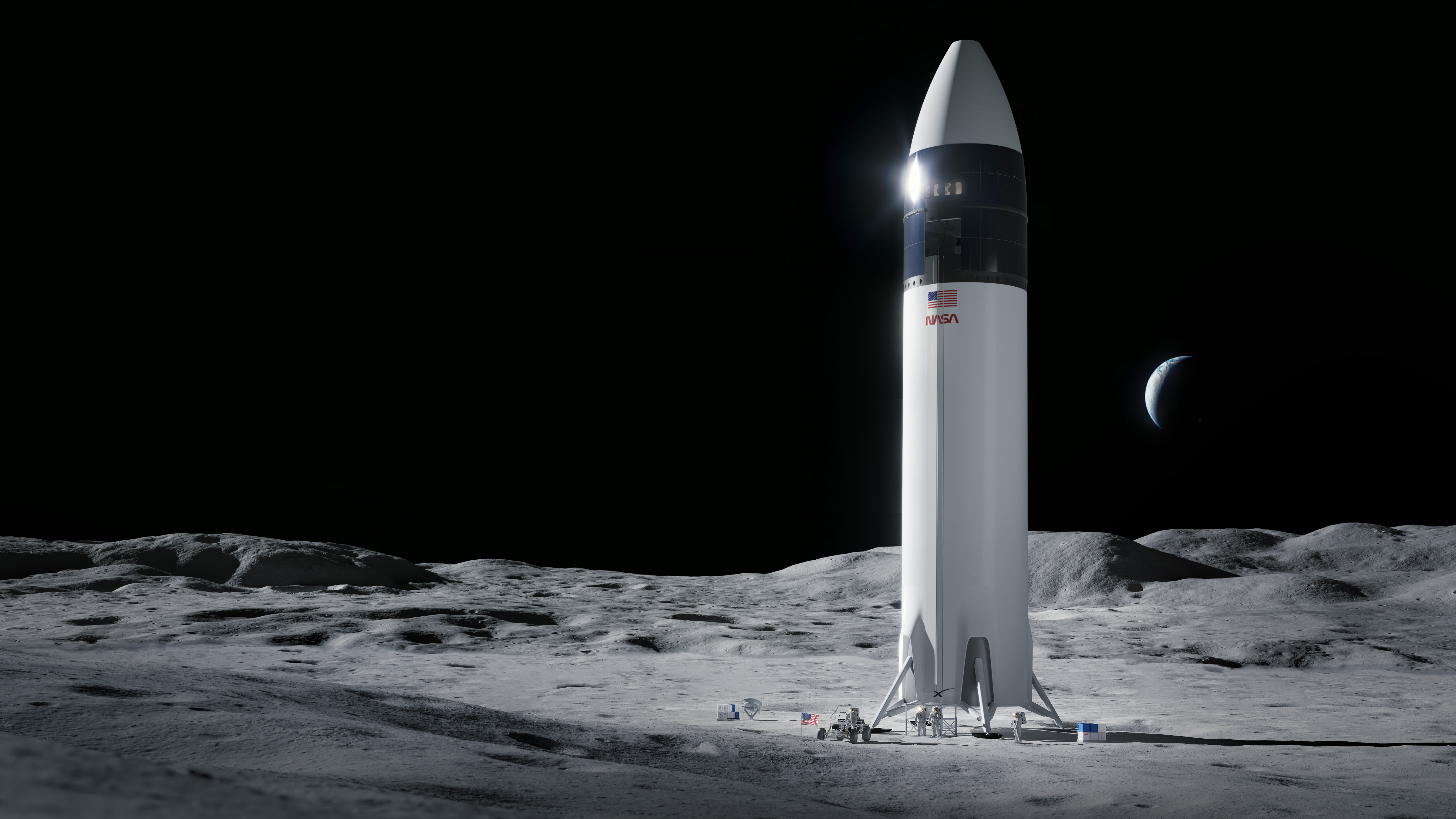NASA has selected SpaceX’s Starship as the lander to take astronauts to the moon
When the first astronauts in over 50 years set foot on the moon, they’ll be riding to the surface aboard Starship.

Later this decade, NASA astronauts are expected to touch down on the lunar surface for the first time in decades. When they do, according to an announcement made by the agency, they’ll be riding inside SpaceX’s Starship vehicle.
NASA’s award of a $2.9 billion contract to build Starship, first reported by the Washington Post on April 16 and later confirmed by NASA, is a huge achievement for the space company founded and run by billionaire Elon Musk, as well as a massive blow to the hopes of its rivals. (Update May 3: NASA has temporarily suspended work with SpaceX over Starship lander development as the Government Accountability Office reviews Blue Origin's and Dynetics' protests over the award decision.)
The lander: SpaceX bills Starship as a next-generation spacecraft meant to take humans to the moon and, one day, Mars. Measuring around 160 feet tall and 30 feet in diameter, Starship is a reusable vehicle that’s designed to take off and land on the ground vertically. The plan is for it to launch separately and station itself in lunar orbit until NASA astronauts arrive aboard the agency’s Orion crew capsule. Starship would simply ferry astronauts to the moon’s surface and back.
Surprising selection: Last year, NASA awarded three different groups contracts to further develop their own proposals for lunar landers: $135 million to SpaceX, $253 million to defense company Dynetics (which was working with Sierra Nevada Corporation), and $579 million to a four-company team led by Blue Origin (working with Northrop Grumman, Lockheed Martin, and Draper).
SpaceX didn’t just receive the least amount of money—its proposal also earned the worst technical and management ratings. NASA’s associate administrator (now acting administrator) Steve Jurczyk wrote (pdf) that Starship’s propulsion system was “notably complex and comprised of likewise complex individual subsystems that have yet to be developed, tested, and certified with very little schedule margin to accommodate delays.” The uncertainties were only exacerbated by SpaceX’s notoriously poor track record with meeting deadlines.
What changed: Since then, SpaceX has gone through a number of different flight tests of several full-scale Starship prototypes, including a 10-kilometer high-altitude flight and safe landing in March. (It also exploded a few times.) According to the Washington Post, documents suggest NASA was enamored with Starship’s ability to ferry a lot of cargo to the moon (up to 100 tons), not to mention its $2.9 billion bid for the contract, which was far lower than its rivals’.
"This innovative human landing system will be a hallmark in spaceflight history,” says Lisa Watson-Morgan, NASA’s program manager for the lunar lander system. “We’re confident in NASA’s partnership with SpaceX.”
What this means: For SpaceX’s rivals, it’s a devastating blow—especially to Blue Origin. The company, founded by Jeff Bezos, had unveiled its Blue Moon lander concept in 2019 and has publicly campaigned for NASA to select it for future lunar missions. Blue Moon was arguably the most well-developed of the three proposals when NASA awarded its first round of contracts.
For SpaceX, it’s a big vote of confidence in Starship as a crucial piece of technology for the next generation of space exploration. It comes less than a year after the company’s Crew Dragon vehicle was certified as the only American spacecraft capable of taking NASA astronauts to space. And it seems to confirm that the SpaceX is now NASA’s biggest private partner, supplanting veteran firms like Northrop Grumman and shunting newer ones like Blue Origin further to the sidelines. However, there’s at least one major hurdle: Starship needs to launch using a Super Heavy rocket—a design that SpaceX has yet to fly.
For NASA, the biggest implication is that SpaceX’s vehicles will only continue to play a bigger role for Artemis, the lunar exploration program being touted as the successor to Apollo. Former president Donald Trump’s directive for NASA to return astronauts to the moon by 2024 was never actually going to be realized, but the selection of a single human lander concept suggests NASA may not miss that deadline by much. The first Artemis missions will use Orion, and the long-delayed Space Launch System rocket is expected to be ready soon.
Deep Dive
Space
How to safely watch and photograph the total solar eclipse
The solar eclipse this Monday, April 8, will be visible to millions. Here’s how to make the most of your experience.
The great commercial takeover of low Earth orbit
Axiom Space and other companies are betting they can build private structures to replace the International Space Station.
How scientists are using quantum squeezing to push the limits of their sensors
Fuzziness may rule the quantum realm, but it can be manipulated to our advantage.
Stay connected
Get the latest updates from
MIT Technology Review
Discover special offers, top stories, upcoming events, and more.